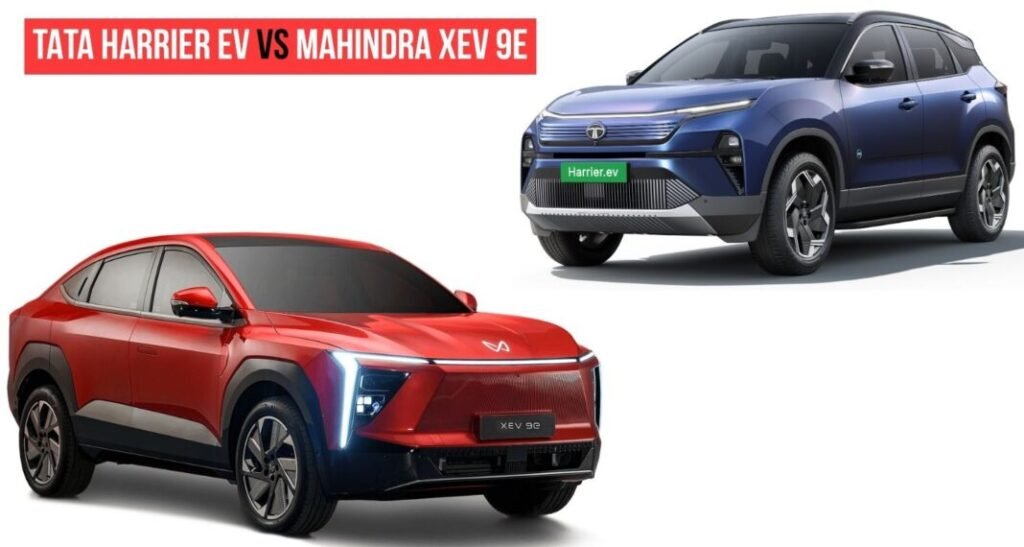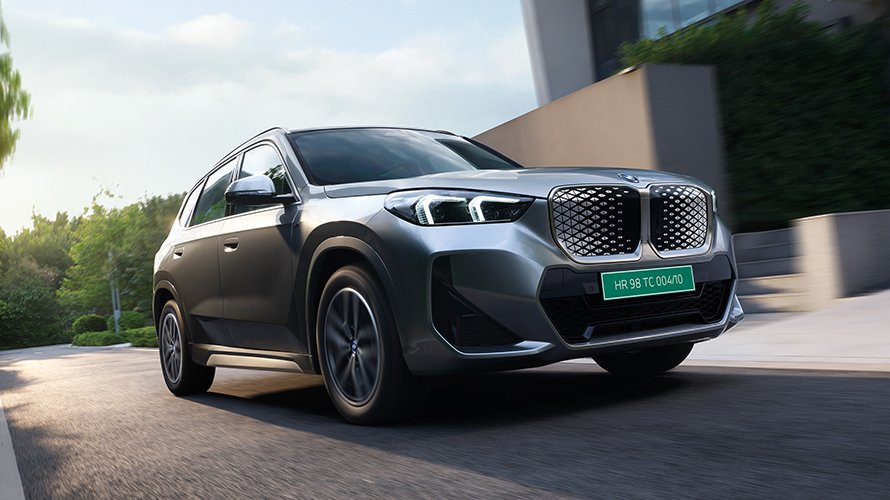In the electrifying battle for supremacy in India’s premium electric SUV segment, one question dominates conversations: Who leads in range—Tata or Mahindra? With the recent launch of the Tata Harrier EV and the established Mahindra XEV 9e, this debate has intensified. Both vehicles promise impressive claimed figures, but real-world performance tells a different story. Drawing from Autocar India’s comprehensive rain test conducted under controlled city and highway conditions, the Mahindra XEV 9e pulls ahead, showcasing superior efficiency. Let’s break down the numbers, test methodology, and the reasons behind the gap to help you decide which EV suits your driving needs.
ata and Mahindra both tout ARAI/MIDC-certified ranges that sound stellar on paper, but as any EV owner knows, lab conditions rarely mirror everyday driving. The Autocar test simulated practical scenarios: fully charged batteries, manufacturer-recommended tyre pressures, fixed loops covering identical city and highway stretches, average speeds, and AC set to 22°C in auto mode. Accessories like the music system, lights, and ventilated seats were used as a typical driver would, ensuring a realistic evaluation.
Here’s a side-by-side comparison based on the test results:
| Parameter | Tata Harrier EV (75 kWh AWD) | Mahindra XEV 9e (79 kWh RWD) |
|---|---|---|
| Claimed Range (ARAI/MIDC) | 622 km | 656 km |
| City Range | 409 km | 425 km |
| Highway Range | 393 km | 488 km |
| Combined Range | 401 km | 456 km |
| Efficiency (Combined) | 5.35 km/kWh | 5.78 km/kWh |
The Mahindra XEV 9e not only outperforms the Harrier EV in every category but also closes the gap to its claimed range more effectively. In the city, the difference is a modest 16 km, but on highways, the XEV 9e surges ahead by 95 km—a 24% advantage. Combined, it delivers 55 km more, translating to fewer charging stops for long-distance drivers. For context, the Harrier EV’s real-world figure aligns with Tata’s own C75 estimate (480-505 km for lighter loads), but the AWD variant tested here incurs a penalty due to its dual-motor setup.
These results highlight a key truth in EVs: Highway efficiency is where many falter due to higher speeds and less regenerative braking. The XEV 9e’s ability to maintain momentum without excessive energy drain makes it the clear winner for mixed-use scenarios, such as urban commutes blended with weekend getaways.
Why Does the Mahindra XEV 9e Outrange the Tata Harrier EV?The transcript teases “two simple answers,” and real-world data backs them up: battery size and drivetrain configuration. But let’s dive deeper into the engineering factors at play.
- Larger Battery Capacity and Chemistry Efficiency: The XEV 9e tested here packs a 79 kWh battery, edging out the Harrier EV’s 75 kWh unit. While both use lithium iron phosphate (LFP) cells for safety and longevity, Mahindra’s pack is optimized for higher energy density. This allows the XEV 9e to extract more usable energy per kWh, especially at highway speeds where aerodynamic drag dominates. In contrast, the Harrier EV’s battery, while robust, is stretched thinner by its performance-oriented tuning, leading to quicker depletion.
- Rear-Wheel Drive (RWD) vs. All-Wheel Drive (AWD) Efficiency Trade-Off: The Harrier EV’s AWD setup—featuring dual motors (one per axle) for 313 hp and 504 Nm—delivers thrilling acceleration (0-100 km/h in 6.3 seconds) and superior traction for off-road or wet conditions. However, it comes at a cost: added weight (2,335 kg vs. the XEV 9e’s ~2,100 kg) and constant power draw from the front motor increase consumption. The single-motor RWD XEV 9e (231 hp, 380 Nm) prioritizes efficiency, avoiding the energy overhead of AWD. This explains the highway disparity, where the Harrier’s extra heft and dual-motor drag shine less brightly.
Other contributing factors include:
- Aerodynamics and Weight: The XEV 9e’s coupe-like silhouette (Cd ~0.28) slips through the air better than the boxier Harrier EV (Cd ~0.32), reducing wind resistance at speed. Combined with its lighter curb weight, this boosts highway range significantly.
- Software and Regen Tuning: Both EVs use efficient Eco modes and regenerative braking, but Mahindra’s calibration allows for sustained high efficiency (up to 7.1 km/kWh in city tests from prior models). Tata’s system excels in city regen but lags on open roads.
- Power Output Balance: The Harrier EV’s higher peak power (313 hp vs. 231 hp) tempts aggressive driving, which can sap range. The XEV 9e, tuned for balance, rewards conservative highway cruising.
In essence, if range is your priority, the XEV 9e’s RWD efficiency wins. For those needing AWD versatility (e.g., monsoons or light off-roading), the Harrier EV’s trade-off is worthwhile, though it demands more frequent charges.
The Mahindra XEV 9e leads in pure range, making it ideal for highway-heavy users or those with range anxiety—think inter-city trips from Mumbai to Pune (one-way ~150 km) without a pit stop. Its 456 km combined range covers most daily needs with buffer, and faster DC charging (up to 175 kW) adds convenience.



